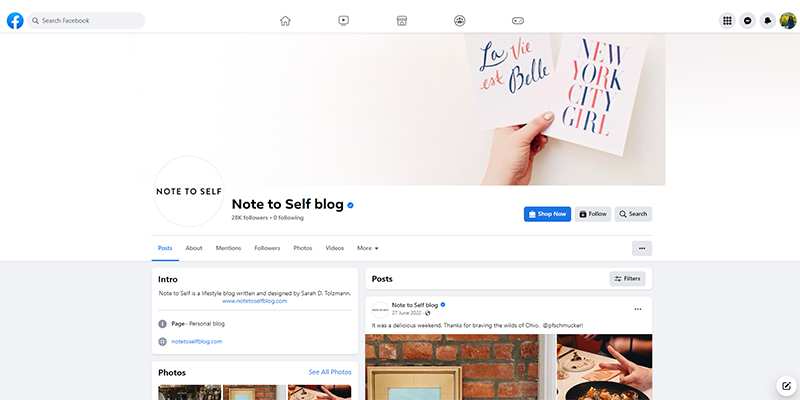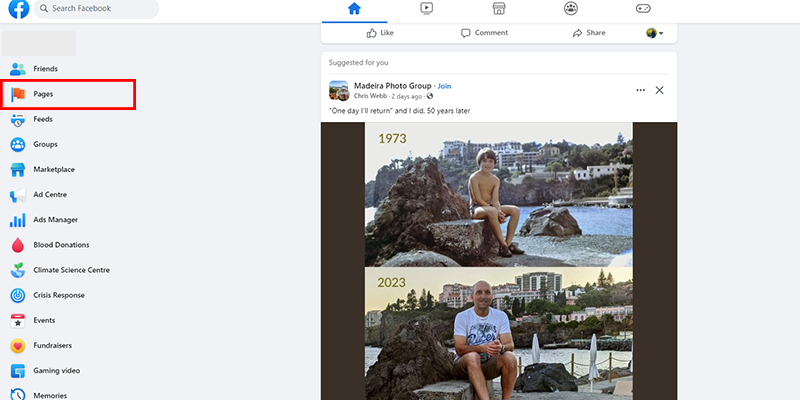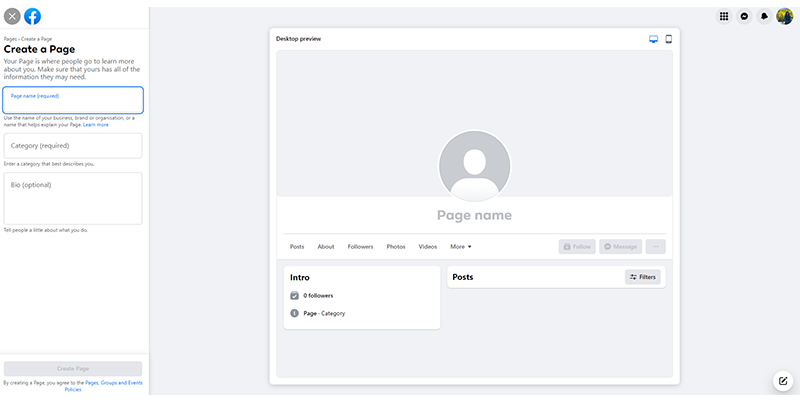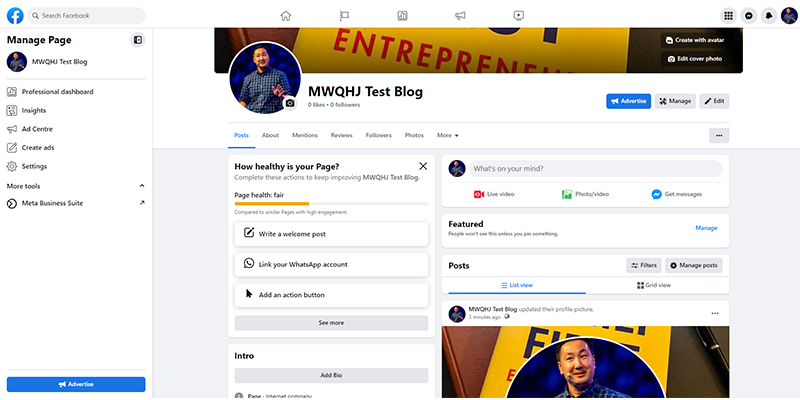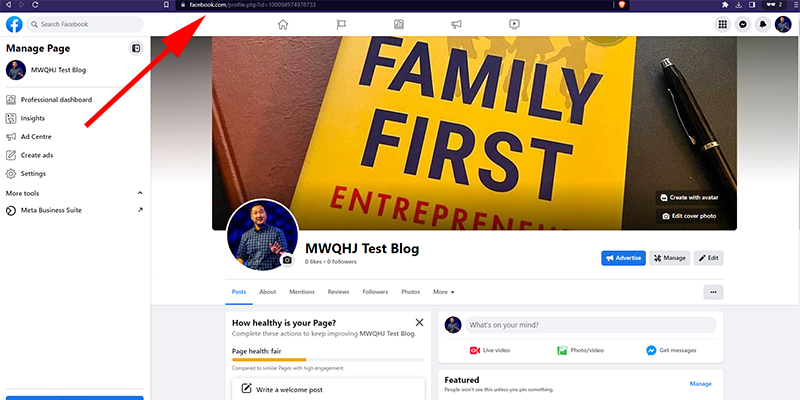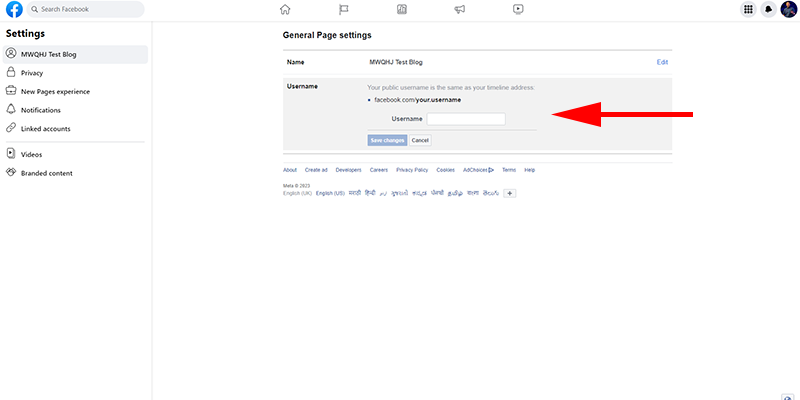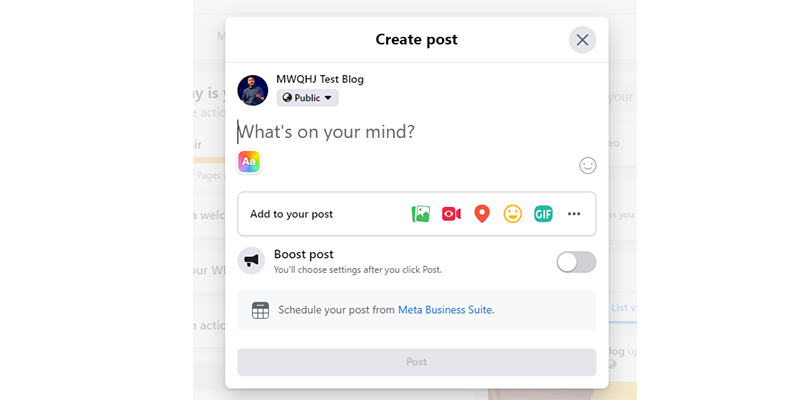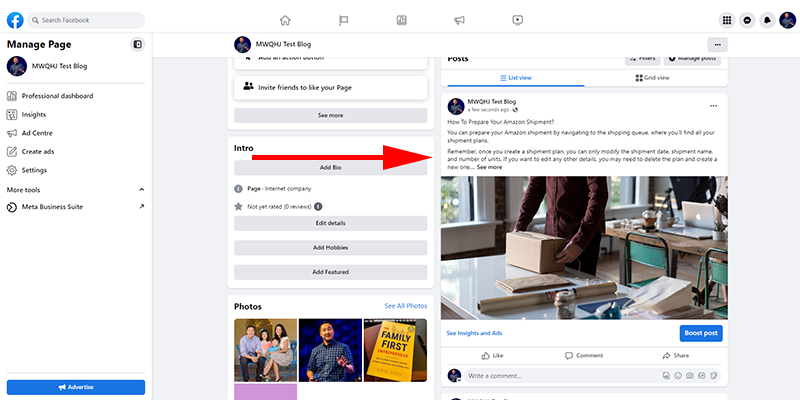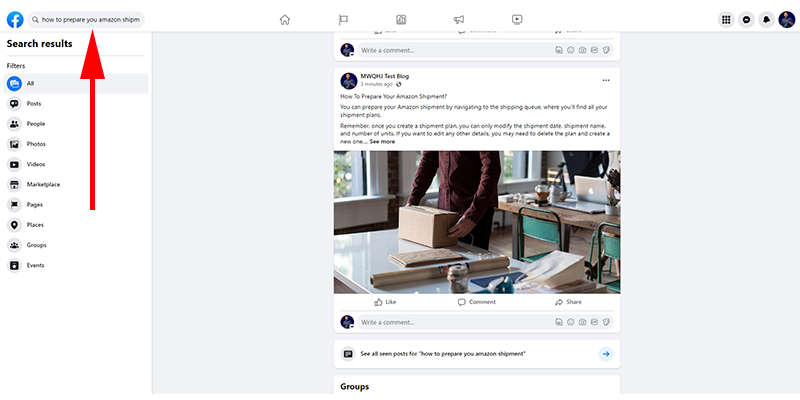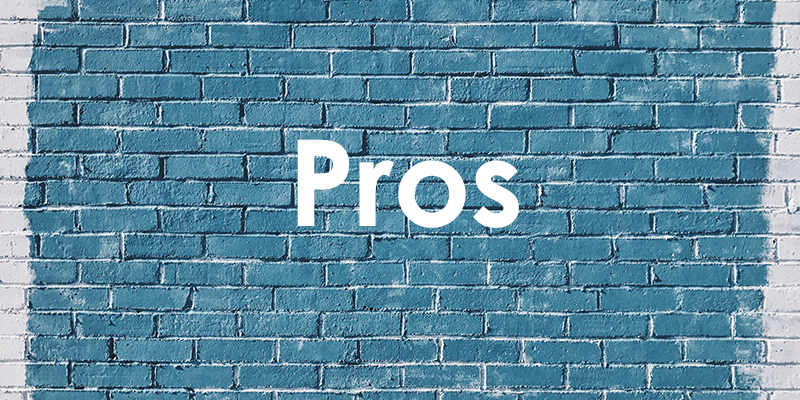Facebook is well known as a place to connect with family and friends, but it’s also a place where bloggers can create and share written content.
But is it better to operate a blog on Facebook or your own website?
In this article, I’ll walk you through the step-by-step process of how to start a blog on Facebook and weigh the pros and cons.
Get My Free Mini Course On How To Start A Successful Ecommerce Store
If you are interested in starting an ecommerce business, I put together a comprehensive package of resources that will help you launch your own online store from complete scratch. Be sure to grab it before you leave!
How Does A Blog On Facebook Work?
Facebook blogging works by creating a Facebook page and writing posts directly on the social media platform.
There is a high character limit, and you can use Facebook’s Posts feature to create a blog centered around a particular subject or personal experience.
Facebook once offered a feature called Notes, which allowed users to post blog-like content. However, Notes was discontinued in October 2020, and users now blog using the Posts feature.
One of the advantages of using Facebook for blogging is that it has a higher character limit than other social media platforms.
Facebook allows you to write longer posts of up to 63,206 characters, roughly equal to 9,800 to 12,000 words per post.
Why Use Facebook For Blogging?
Facebook is great for blogging because it’s easy to set up, costs no money, and has the potential to reach a huge audience.
When you blog on Facebook, you’re publishing posts on a platform over a billion people visit every day.
As per Statista, Facebook has 2.98 billion monthly active users in 2023, making it the most-used online social network worldwide.
Also, the average user spends 40 minutes a day on Facebook, so you have an opportunity to capture their attention and engage with your audience.
How To Start A Blog On Facebook
Starting a blog on Facebook requires 5 steps:
- Create a Facebook Page
- Fill Out The “About” Section
- Change Your Facebook Page URL
- Promote Your Facebook Blog
Below are detailed instructions for each step on how to start a blog on Facebook.
Step 1: Create A Facebook Page
A Facebook Page is an area where creators, public figures, businesses, and brands can connect with their audiences and customers.
You can publish blog posts under your personal Facebook profile, but creating a separate page is better.
It allows you to have a dedicated space for your blog content that’s separate from your personal profile, making it easier to build a focused audience.
You can create a Facebook Page by logging into your account and clicking “See more”> “Pages” on the left side menu. Then, simply click “Create New Page.”
Step 2: Fill Out The “About” Section
The “About” section lets your reader know more about you and the reason your Facebook blog exists. This is where you’ll add your page name, category, and personal bio.
To complete this section, fill out the necessary details and click “Create Page.” You’ll then be asked to complete the following five steps:
- Connect: Add your website URL (if applicable), phone number, email address, location, and working hours.
- Customize your page: Add profile image and cover photo.
- Connect WhatsApp to your Page: Link your WhatsApp account to your Facebook page. This is an optional step.
- Build your page audience: Invite your friends to follow your page by clicking the “Invite Friends” button.
- Stay informed: Turn on page notifications and marketing emails about your page.
Your page should look similar to this on the backend:
Step 3: Change Your Facebook Page URL
The initial page URL that Facebook assigns you will look like a string of random characters and won’t showcase your brand name.
You can easily change it by following these steps:
- Click “Settings” on the left panel.
- In the “General Page” settings, click “Edit” beside the Username field.
- Enter your username. The username shouldn’t have any special characters or spaces between the words.
- Click “Save Changes.”
Step 4: Create And Publish Your Facebook Post
Once you’ve finished setting up your Facebook Page, click on the “What’s on your mind?” text box on the right side of your screen.
Create your first Facebook blog post by adding text and relevant images. Then click “Post” to publish your post. It’s that simple.
Step 5: Promote Your Facebook Blog
Once you’ve created your Facebook Page and published your first blog post, it’s time to market and promote your blog page.
There are three main places where people can discover your blog on Facebook:
- Groups: Participate in Facebook Groups in your niche to build a loyal online community and increase your page’s visibility. Instead of just posting links to your blog, focus on providing valuable content to spark conversations and encourage other group members to share your posts.
- Ads: You can purchase Facebook Ads to boost the visibility of your blog. You’ll need an Ads Manager account to post ads.
- Search: Optimize your blog posts with relevant keywords and hashtags to increase the chances of your content appearing in the search results when users look for related topics on Facebook.
How To Schedule A Post On Facebook
Scheduling posts allows you to set up content to be published at a later time and date. You can schedule a Facebook blog post through your page’s Meta Business Suite by following these steps:
- Click “Meta Business Suite” on the left side panel of your page.
- Click “Planner” in the left menu.
- Click “Schedule” and select “Schedule Post” from the dropdown menu.
- Select the date and time when you want the post to publish.
- Create a post by adding a photo or video, and text.
- Recheck your schedule and click “Schedule” in the bottom left. You can schedule posts anywhere between 20 minutes and 29 days in advance.
You can also edit, delete, duplicate, or reschedule the post by clicking on the post in the calendar and selecting the three-dot ellipsis in the “Post overview.”
How To Make Money Blogging On Facebook
You can make money with your Facebook blog by collaborating with brands, adding affiliate links, opening a Facebook store, and inserting in-stream ads in your live videos.
- Collaborate with brands: Become an influencer and search for paid partnership opportunities with brands that align with your content and audience. Set your rates based on your reach and engagement.
- Affiliate marketing: Promote products that you have used personally and believe in. You’ll earn a small commission when your readers click on your affiliate link and purchase the product. Amazon Associates is a good affiliate program for beginners due to its huge product selection and high acceptance rate.
- Open a Facebook Shop: Create a Facebook Shop for your blog and sell products that align with your content. For example, you can sell print on demand merchandise, coffee mugs for a coffee-related page, or craft supplies for DIY projects.
- Stream videos on Facebook Live: If you meet the eligibility criteria of at least 10,000 followers and five active videos on your page, you can earn money by inserting in-stream ads into your live streams.
Types Of Blog Posts To Write On Facebook
You can create different types of content on your Facebook blog, but choose a style and format that fits your niche and target audience.
Here are some ideas to get you started:
- Local news: Keep your audience updated on events happening in your area.
- Listicles: Create useful lists of recommendations, ideas, or products.
- How-to guides: Share step-by-step instructions on various topics.
- Case studies: Explore real-life examples from specific industries.
- Surveys and polls: Engage your audience and gather their opinions.
- Product Reviews: Offer honest feedback on products or services you’ve tried.
- Interviews: Talk to celebrities or experts for unique insights.
- Vlogs and video podcasts: Deliver your content in a video format.
- Personal stories: Share motivating or inspiring stories based on your own experience.
- Thought-provoking questions: By asking questions of your readers, you can encourage discussion on many interesting topics.
- Event summaries: Recap important historical or local events.
- Humorous content: Share memes to add a touch of entertainment and humor to your page.
Pros Of Blogging On Facebook
Free Platform
Unlike other platforms that require monthly fees, Facebook is a free platform. This allows new bloggers and businesses to minimize costs when getting started.
Facebook Has A Huge Audience
Facebook gives you the potential to reach a huge audience. Facebook also makes it easy to promote your Facebook Page or a personal profile on their platform.
Low Barrier To Entry
Since you probably already have a personal Facebook account, adding a Facebook Page to your profile is easy.
Running a blog on your own website is more complicated. You’ll need to purchase a domain name, choose a content management system and hosting provider, design your website, and look after ongoing maintenance.
Easy To Use
Facebook’s user-friendly platform makes publishing blog posts easy. You can create and share content with only a few clicks, making it much simpler to use than more intensive platforms like WordPress.
Just click “Create a Post,” create your content, and click “Post” to publish it.
Seamless Engagement
By posting your blog content on Facebook, your audience can read your posts without leaving the platform, making it easier for the reader to access your content.
Cons Of Blogging On Facebook
Limited Formatting Options
Facebook’s formatting restrictions don’t allow adding images between text, creating separate sections, or highlighting text. Your own website with a dedicated content management system, like WordPress, gives you more room for creative expression.
Lack Of SEO Control
With Facebook blogging, you have limited control over SEO and how your posts appear in feeds and search results on Facebook. And your blog posts won’t show up at all in Google’s search results.
You also can’t use SEO tools like Google Analytics to get detailed insights into traffic, user behavior, and performance metrics.
Limited Monetization
While there are ways to earn money on Facebook through affiliate marketing, influencer collaborations, and Facebook Shop, blogging on your own website gives you more ways to make money.
For example, you can’t earn ad revenue on Facebook from platforms like Google AdSense, Ezoic, or Mediavine, limiting your revenue potential.
Is Facebook Blogging Worth It?
Facebook blogging is worth it as a starting point for new bloggers, especially those without a website or those on a limited budget.
Facebook blogging allows you to build a community with the potential to reach a large user base.
However, to make money blogging, you should establish a dedicated website. It will give you more control over your content and increase growth opportunities.
Even with your own website, you can still create a Facebook page to promote your blog and occasionally blog directly on Facebook to improve your reach.

Ready To Get Serious About Starting An Online Business?
If you are really considering starting your own online business, then you have to check out my free mini course on How To Create A Niche Online Store In 5 Easy Steps.
In this 6 day mini course, I reveal the steps that my wife and I took to earn 100 thousand dollars in the span of just a year. Best of all, it's free and you'll receive weekly ecommerce tips and strategies!
Related Posts In Making Money
- How To Figure Out What You Should Do For A Living If You Hate Your Job
- How To Make Money As A 13-Year-Old: 27 Legit Ways
- Making A 6 Figure Income With Our Online Store – How Much Work Does It Take?
- 28 Low Cost Business Ideas With High Profit Potential
- A Peek Into The Glamorous Life Of A Small Business Owner

Steve Chou is a highly recognized influencer in the ecommerce space and has taught thousands of students how to effectively sell physical products online over at ProfitableOnlineStore.com.
His blog, MyWifeQuitHerJob.com, has been featured in Forbes, Inc, The New York Times, Entrepreneur and MSNBC.
He's also a contributing author for BigCommerce, Klaviyo, ManyChat, Printful, Privy, CXL, Ecommerce Fuel, GlockApps, Privy, Social Media Examiner, Web Designer Depot, Sumo and other leading business publications.
In addition, he runs a popular ecommerce podcast, My Wife Quit Her Job, which is a top 25 marketing show on all of Apple Podcasts.
To stay up to date with all of the latest ecommerce trends, Steve runs a 7 figure ecommerce store, BumblebeeLinens.com, with his wife and puts on an annual ecommerce conference called The Sellers Summit.
Steve carries both a bachelors and a masters degree in electrical engineering from Stanford University. Despite majoring in electrical engineering, he spent a good portion of his graduate education studying entrepreneurship and the mechanics of running small businesses.



